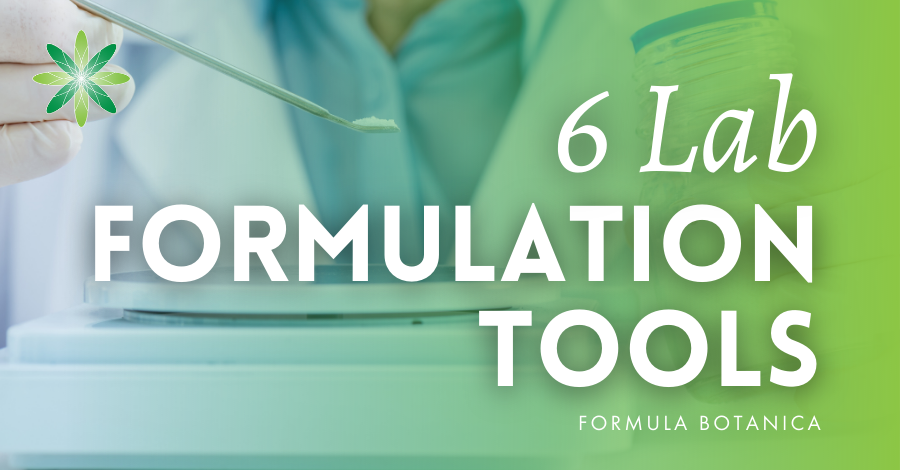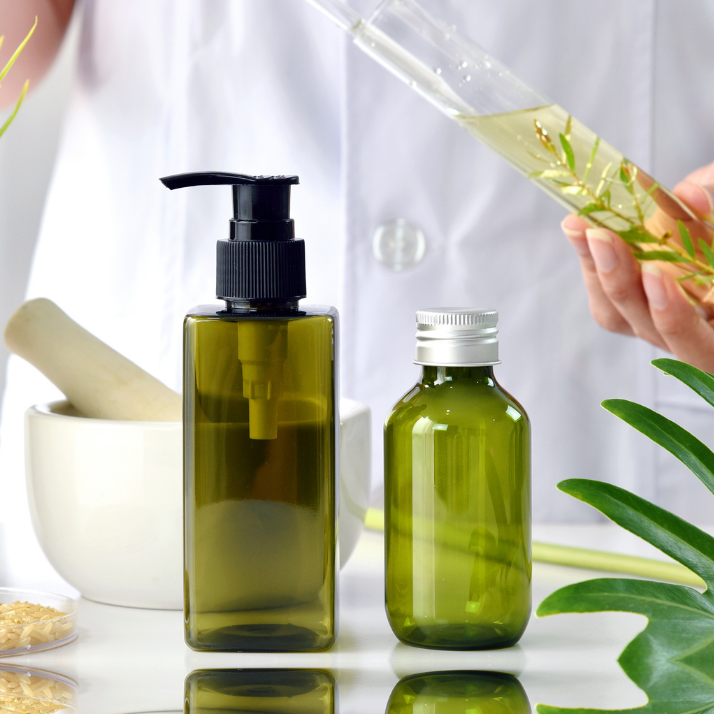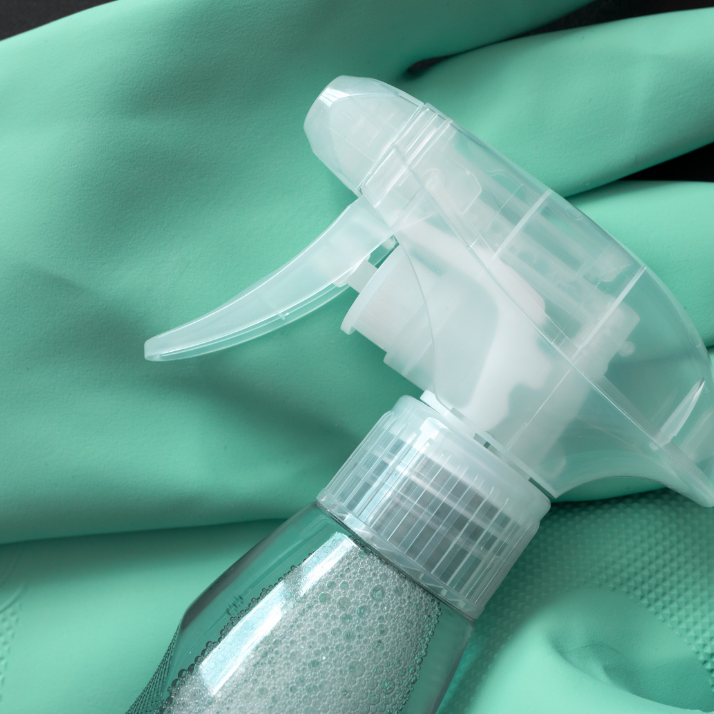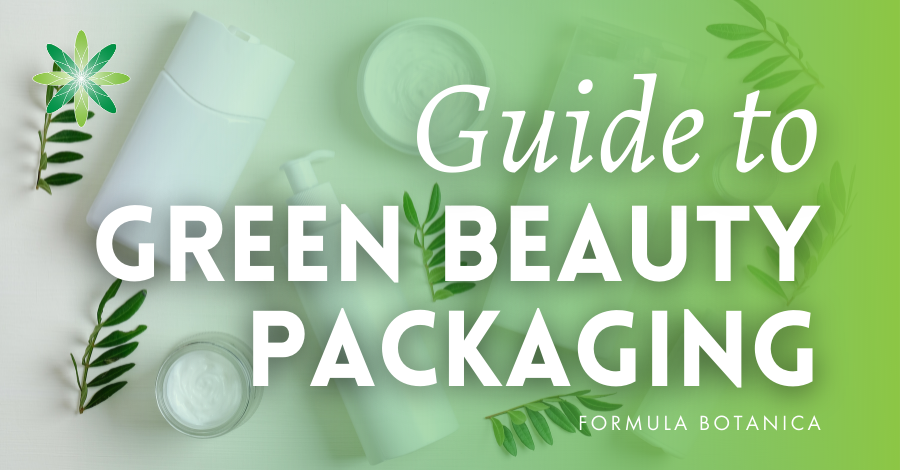You want to make natural cosmetics at home, but what formulation lab equipment do you need to start out with? And how much is it going to cost?
As with most interests that begin as a hobby but set their sights on becoming a business, whether side hustle or full time, cosmetic formulation can quickly become an all-consuming passion.
But, we’re here to reassure you that it needn’t be expensive to start formulating. In fact, you can get going with just six items; many of which you may have at home or can buy easily and cheaply online.
Everyone can formulate
At Formula Botanica, we believe everyone can formulate, which means that the barriers to entry need to be low. From our experience in overseeing thousands of new students as they start their courses with us, we know it is perfectly possible to succeed in making your first, fabulous cosmetic products on a limited budget and with just a few tools.
In this post, we go over the six basic types of lab equipment that can get you started. As you develop your natural formulating skills, you will know instinctively what extra equipment to buy or plan ahead for. Do you need a lab bench homongeniser from the get-go when a regular stick blender or kitchen whisk – even a manual one – can do the job? No, you don’t. At Formula Botanica, we strongly believe you need to keep things simple to start with.
Even with our basic formulation lab equipment list below, you can progress from starter-level anhydrous formulations such as this simple face oil and move on to making balms and even more complex emulsions that involve greater precision and expertise.
Your top 6 lab tools
Our list covers the six, essential, lab equipment types you needed to protect yourself, your formulations and your product users; and to weigh, blend, heat and store your formulations as well as, and importantly, clean your working area hygienically before and after formulating.
In brief, this is all you need to start formulating:
- Protecting: PPE basics – apron, eye protection, gloves, hairnet.
- Weighing: jewellery or pocket scales and some pipettes.
- Containing: glass beakers and bowls, stainless steel pans, empty cosmetic jars and bottles.
- Heating: hob or electric hotplate.
- Blending: glass stirring rods and stainless steel mini whisks.
- Cleaning: disinfectant, rubbing alcohol and paper towels.
That’s all you need. But let’s give you some tips on what to look for and where to buy this basic lab equipment.
1. Protective gear (PPE)
Over the past year, we’ve all become very familiar with personal protective equipment (PPE) which is part of our daily lives and no longer just used by lab scientists or medical staff. PPE for the cosmetic formulation lab is used not only to protect ourselves, in particular faces and hands, but also our formulations from contamination.
We bundle together the PPE you need as: gloves; an apron or lab coat; eye protection such as arcylic, shatter-proof glasses or goggles or a transparent face mask; a hairnet; and covered-top shoes (to protect your feet in case something spills).
You may already have some of these at home. If you have sensitive skin, we recommend using nitrile, powder-free gloves. At Formula Botanica, we use our signature green gloves and similar ones are available on our storefront here:
Disposable biodegradable nitrile, powder-free work gloves on Amazon UK and Amazon US.
2. Weighing and measuring
One of the first professional formulation skills you learn on our Diploma in Organic Skincare Formulation is the critical importance of weighing out formulation ingredients with precision. You may have come across DIY cosmetic recipes online that talk in drops or spoonfuls of ingredients. There is no room for measuring liquid ingredients in ml or fluid ounces even if you buy cosmetic products sold with volume on their bottles and cartons.
Measuring ingredients by volume and especially vague amounts like drops or spoons is a highly inaccurate way to create cosmetics, not to mention unreliable and potentially unsafe too. We cover the reasons for this in these blog posts:
Top 10 organic formulation questions answered
Why you should NEVER measure essential oils in drops
So, what do you need to weigh with precision and that is affordable? You can start out with a cheap jewellery scales or pocket scales. These are around $10-$15 and a similar amount in Euro. The ones to look for have a weighing range from 0.01g to 200-500g. This allows you to weigh out very small amounts of ingredients such as essential oils many of which are added in minute amounts in order to be within their permitted dermal limits. Ensure you buy scales with a TARE button that allows you to zero the scales between weighing out different ingredients.
These digital pocket scales are ideal for starting out and for making small trial amounts of formulations. Even later on, they come in handy for that. Once you start making larger batches of product, you will need scales that allow you to weigh out several kilos of ingredients. These will have accuracy to around one decimal point only.
Pipettes are useful for decanting small volumes of ingredients like preservatives and essential oils but do not use the ml measurement on them – always weigh ingredients. A set of steel measuring spoons is also useful for handling powders like gums, exfoliants, clays and so on.
A few silicon or stainless steel spatulas, and some spoons and knives are useful. Don’t borrow your kitchen ones; do buy new and set aside for formulating only.
We suggest taking a look at these options in our Formula Botanica Amazon stores:
Digital pocket scales and larger scales – Amazon UK / Amazon USA
3. Glassware, containers and bottles
First, let’s talk about the materials you need for the containers, vessels, mixing bowls and bottles for formulating and storing your cosmetic products in. Glass and stainless steel are ideal as they are inert materials and can be cleaned hygienically in a dishwasher first, and then rinsed out with rubbing alcohol (70% denatured isopropyl alcohol or ethyl alcohol solution in water) and left to air dry.
Ceramic can crack, craze and harbour bacteria and other metals can leave trace elements or affect the formulation. Trained perfumers can even tell the difference between an essential oil distilled in copper from one processed in steel stills!
Choose a few, large size glass beakers in the 200-500ml range, and also several 30-50ml beakers for small amounts of ingredients. We find the 250ml size useful as it is large enough for blending when making face oils or combining the water and oil phases of emulsions. They need to be lab quality, Borosilicate glass that resists chemical and acid degradation.
Stainless steel bowls are useful for mixing cold-process formulations, larger amounts of blends and dry materials like scrub exfoliants. Glass and stainless steel bowls are also useful as ‘bain marie’ bowls to use over a pan of hot water when melting butters and waxes.
Dark glass is best to keep heat- and light-sensitive oils in, and BPA-free aluminium is a cheap option for putting batches of creams and balms in. Miron glass may not recyclable in your area, but it is a good option to use to store ingredients in.
Buy lab quality glass beakers online or from local educational/medical lab suppliers and bowls from household stores as well as Amazon.
Want to make skincare at home? Then read the @formulabotanica guide to the 6 basic tools every new formulator needs. #makeskincare #naturalskincare #naturalformulation Share on X
4. Heating equipment
We do love our hotplates and water baths at Formula Botanica and in our training videos you will see us using these for demonstrations. But, even our tutors started out with, and still use a bain marie to heat oils, waxes, butters and water ingredients. If you’ve ever melted chocolate in a bain marie when cooking, then that is the same method you can use to melt and heat butters, oils and waxes, as well as water phases in formulations.
Just keep your cosmetic making utensils separate from those you use daily in the kitchen even if you are using your regular kitchen electric or gas hob to heat the water in a pan. Buy a couple of small-to-medium stainless steel saucepans (as you may need to heat both oil and water phase ingredients at the same time, and separately of course). Check that your glass bowls rest on the pans so they sit in the steam zone not in the simmering water.
As we’re talking heating, let’s mention the need for an accurate thermometer. You can find good quality ones meant for preserve making or opt for a non-contact digital gun using an infrared laser beam.
Later on, if want to sell your products, you will need to check your country’s regulations on where and how you can make cosmetics at home, and follow Good Manufacturing Practice (GMP). This might mean creating a working lab space separate from your kitchen or daily living areas and at this point, you need to explore hot plates for lab use. These range from around $40 to over $100 for dual plates. We have some suggestions here:
1500W Hot Plates on Amazon UK / Amazon USA
5. Mixing, blending, homogenising
All you need as a beginner formulator are glass rods and mini whisks. You can easily manage with these to blend, stir, mix and ‘homogenise’ your formulations long after you move from beginner stage. You may need more arm muscle to do some jobs, like blending oleogels, but even our tutors still rely on the basics for small batches and when testing ingredients out. Buy some stainless steel mini whisks that fit your various sizes of glass beakers.
See our equipment pages on Amazon.co.uk and Amazon.com for mini whisks, milk frothers and glass rods.
When you want to add some blending equipment, we suggest finding a handheld, stick blender with propeller blade attachments for blending. Some may come with homogeniser attachments too but these tend to be more expensive blenders for pro chefs or designed as lab equipment. So don’t rush into buying expensive stick blenders. Take a look at how the attachments fit on as you need to ensure the stick is long enough and that you can submerge propeller and homogeniser heads into the formulation to avoid sucking air into your product.
Take a look at these suggestions on our storefronts: Amazon.co.uk / Amazon.com
6. Safety & hygiene
If you’ve been reading some of our formulations on this blog, you will see we regularly stress creating a hygienic space before you start formulating. Not all of us have the luxury of a dedicated, separate room but as our tutors explain in this video on setting up a home lab, with a little organisation, common sense and hygiene and safety basics you can start almost anywhere.
Ideally, work on an impervious surface – you can place a silicon mat or glass cutting ‘board’ down – and spray a solution of 70% ethanol or 70% isopropyl ‘rubbing’ alcohol to sanitise the surface before and after formulating. You can buy alcohol solutions from pharmacies and drugstores. You can prepare your utensils and beakers by spraying them with the alcohol solution and letting them air dry before starting to use them.
Buy some paper towels, keep a closed-lid trash/rubbish bin nearby, and ensure the room has ample ventilation and light, and is clean and as dust free as possible.
Once you build up a stock of ingredients, you need suitable, safe storage and to think about the storage temperatures of ingredients especially if you are in hot climate. Ensure that you work without pets and young children around and keep your cosmetic ingredients and equipment stored away safely when not in use. Use common sense when you start out formulating.
Where next with your equipment?
The equipment above is intended as your basic starter kit as you take your first steps into natural formulation at home. As you can see, the items are not expensive and are quite easy to purchase. As you advance, and also perhaps scale up, you may well need more expensive, robust and professional lab equipment.
A note about GMP
In our Diploma course, we cover Good Manufacturing Practice (GMP) which is mandatory if you go on to sell your cosmetic products. At this stage, you will need to check regulations in your country on making cosmetics at home and most definitely operate to good manufacturing practice (GMP) standards, as well as have products undergo cosmetic safety and stability testing.
Be aware though from the very start, that any cosmetic you test out, even if on yourself, needs to be created in a hygienic and safe manner and we advise getting to grips with GMP very early on in your formulating career.
Leave us a comment
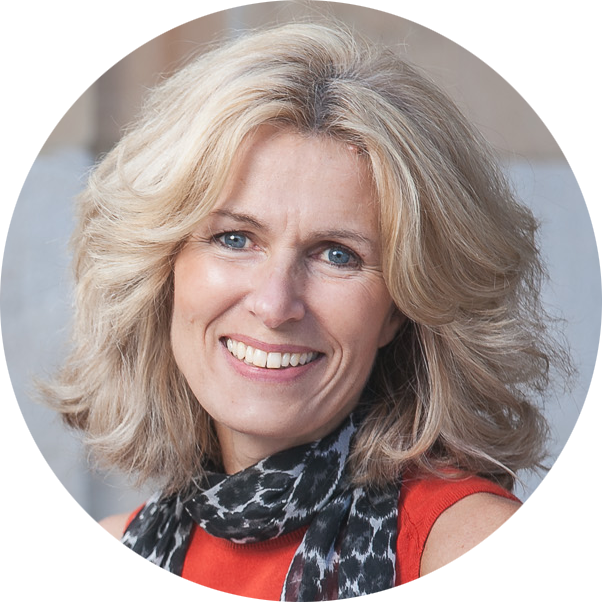
Liz was Formula Botanica’s Content Coordinator between August 2020-2024. Liz worked as a professional blogger, journalist and site developer for many years and was also part of the Formula Botanica student community. Read more about the Formula Botanica Team.

